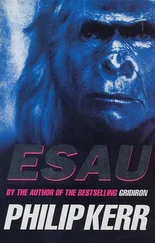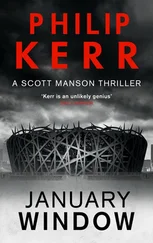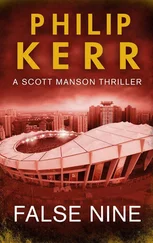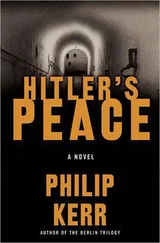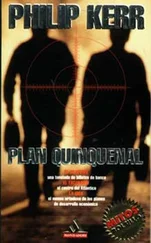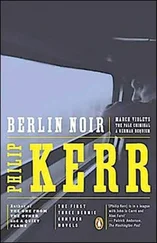But I feel there is one more murder of artistic merit which is worthy of mention, and that is the murder, in 1955, of David Blakely. He was the lover of Ruth Ellis who, having murdered him, was the last woman to be hanged for murder in England.
Blakely and Ellis had been lovers for two years. It was a turbulent, jealous relationship, with many infidelities on both sides. One night, Blakely left the Magnolia public house in Hampstead and found Ellis waiting for him with a revolver. She did not hesitate and shot Blakely several times at point-blank range. The artistic merit of this murder stems from a number of factors: the unfeminine choice of weapon, the unusual determination of the murderer herself and, of course (and most important of all), the singularity of the female artist. Just as it is difficult to find a female composer to rank alongside the likes of Mozart and Beethoven, or a female painter who stands as tall as Titian or Goya, so with the art of murder, there is a dearth of talent among the gentler sex.
Of course recent neurological research has revealed the true reason for this absence of murderous instinct among women; and only time will tell if other aspects of creativity find similar explanation. But let us recognise a real contribution from a woman when one does occur and praise it accordingly.
You will recall that earlier on, I posed the question: Has the twentieth century witnessed a renaissance in the art of murder? Let me now answer this question.
There has been such a renaissance, but it is only one such as Walter Pater might have recognised in that I am describing a temperament, an inwardness of response that is in itself a new form of perception. This temperament declares the weightlessness of modern men and the precariousness of their prejudices. It recognises that all knowledge is merely provisional and that there is no essential truth save death itself. Anything is permissible which might reveal the soul of the artist, including murder.
This renaissance, this outbreak of the art of murder, identifies not the fruit of experience but, given its awful brevity, experience itself as an end. It breathes an atmosphere of absolute uncertainty, of continuous change, of new opinions, of a refusal to acquiesce in some facile orthodoxy. As Victor Hugo says, we are all under sentence of death, but with an indefinite reprieve. Therefore, with this particular renaissance, what we are seeing is an appetite for a quickened sense of life, a multiplied consciousness.
Writing in 1891, Oscar Wilde attributed the commonplace character of literature to the decay of lying as an art. More than a century later I feel I can celebrate a century’s worth of literary and artistic excellence and attribute it to the renaissance of the murder as an art, a science, and a social pleasure.
And now, ladies and gentlemen, in conclusion, let me pass over the usual toasts to the Old Man of the Mountains, Charles the Hammer, the Jewish Sicarri, Burke and Hare, the Thugdom in all its branches, and give you my next victim, for I see that he is now abroad and so I must be about my business.
When Ocean Wharf, and other developments like it, was built, it seemed to herald a new lease of life for Docklands, an area which, at that time, had been in steep decline for over twenty years. It was but a temporary respite, but one bubble in the South Sea foam of bubbles that was the London property market of the late 1980s. Even before the last London brick had been laid, the final lick of paint applied to the mural of Churchill here, in the lobby of Winston Mansions, companies like the one which had built Ocean Wharf started to go bankrupt. And, as the years progressed and many of the other developments remained uncompleted, and the local council started to move more and more homeless families into flats which had once been on the market for hundreds of thousands of pounds, then dollars, buildings started to go unrepaired and prices tumbled even further.
The century came round a very sharp corner to find, once again, that Docklands was in steep decline. Indeed the decline seemed all the more dramatic because of all the money which had been spent trying to reclaim it for posterity, to no avail. As the first decade of the new millennium gave way to the second, there remained only a few isolated pockets of comparative affluence, like Ocean Wharf, in what was quickly becoming an urban nightmare of Orwellian proportions.
You might ask why, despite my wealth, I chose to come and live here, in what are virtually siege-like conditions: the architects who designed this development could never have foreseen that one day, Ocean Wharf would be surrounded by an electrified fence. Nor could they have ever envisaged that this would have been necessitated by a local crime rate equivalent to that of New York’s infamous South Bronx.
Staring out of my seventh-floor window here in Winston Mansions, insulated from most sound and unfiltered air, it was hard to know what it was they had envisaged when first they constructed their models. Did they ever imagine shops and stores closed down for lack of business, looted of all their fittings, becoming the first outposts of whole shanty towns of anarchic youth? Could they ever have thought that their neat little parklands with their brightly painted benches and streetlamps would one day be wastelands of abandoned cars and fly tips? And those pieces of plastic, those human replicas which had seemed to happily people the balsa wood scale models — what would the architects have said if they had been told of the statistical probability that each one of them was engaged in the commission of a crime? It was well-named, this Isle of Dogs. ‘Weialala leia Wallala leialala’ went the police car’s siren as it chased some lawless thugs across the unreal cityscape.
And yet it was for all these local attractions that I chose to come and live here. I had a vast amount of comfortable living space at my disposal, and at a very reasonable price too. Most important of all, I could indulge my taste for an outsider’s existence, of living on the very edge of things, in the clean margin of a very dirty notebook. And yet still very handy for central London.
Sweet Thames, run softly till I end my song. Standing here, looking out across the river I found it easy to imagine myself singled out, alone. I have a temperamental hunger for solipsism. With me this is no intellectual posture, but a moral and mystical attitude, so strong that if I were to injure my leg it would lame my thoughts. For after all, knowing pain means being advised by some feature of our pain as to its whereabouts and being able to describe it. In the same way my kinesthetic sensations advise me of the movement and position of my limbs.
I let my index finger make an easy gathering movement of small amplitude. I either hardly feel it, or don’t feel it at all: but perhaps just a little, in the end of the finger, as a slight tension. Does this sensation advise me of the movement? For even without seeing I can describe the movement exactly. I must feel it, to know it — that seems certain. But knowing it only means being able to describe it.
Now if that same finger makes the same movement, but this time against the trigger of my gun, a slight pressure and metallic coldness against the flesh of my finger can advise me that it and the trigger are indeed moving. And watching the collapse of a man’s body in front of me, his head machine-gunning the air with blood, enables me, even without watching my finger, to know that it has moved at least once.
But to know that it has moved six times is not a matter of keeping count: the gun is almost silent, as I have described earlier. The ears are nevertheless affected more strongly than by silence. I don’t feel this in my ears, yet it has this effect. I know the number of the sounds because, after six, I move quickly in another direction.
Читать дальше

